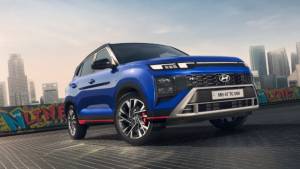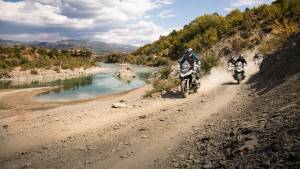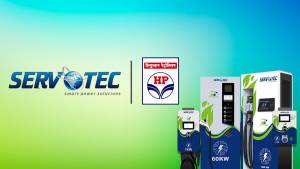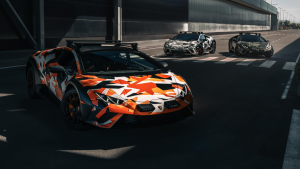Hertz Travelogue - A driving holiday to Belgium
If I held a world map printed on a A5 sized sheet of paper without any markings and asked you to point out Belgium, you probably wouldn't be able to. Even five chances later. That in a nutshell is what Belgium is to most Indians, an obscure country that no one has heard of. Unless of course you are an NRI living in the US and Brussels is the hub where you change flights from. Belgium then for most people living this side of the Indian ocean isn't top of their bucket lists of places to travel to. What a pity, because I have just been there, driving around the Flanders region within Belgium and it is probably one of the best kept secrets of Europe!
My trip began shortly after Shumi got back from Spa, probably Belgiums most popular destination, at least for petrol heads. His first remark when we caught up at the office was, "What a small country, given a motorcycle, I would have had a look at everything in a matter of a few hours". Had I not travelled to Belgium for this drive I would have willingly agreed with him. On Google maps the country looks incredibly small, tucked away neatly between France, Netherlands, Germany and the English Channel.
Belgium is old, centuries old and history records that it has forever been the site of many battles fought between warring nations and fiefdoms. Quite unkindly it is also known as the battleground of Europe, strengthened by the staging of many battles from both the world wars in this region.
Geographically Belgium is split into two distinct provinces, Flanders to the north bordering Netherlands and Wallonia to the south with France as a neighbor. Each of these neighbors has their influence on these regions, in Flanders Dutch or Flemish is the language of choice while in the south French is more popular. An even smaller population closer to Germany speak German. So there really isn't a national language. But that does not matter because what binds Belgium together is its incredible history, its vast shoals of mussel, delicious chocolate and waffles and it's most important produce, beer!
But on to driving in Belgium, principally the Flanders region which is the most popular region for most travelers. I can very quickly cover that bit so we can get on to the more important part of what Flanders is all about. Now driving in Belgium is simple, like in all of Europe you drive on the wrong side of the road to us, which is the right side of the road. Cars are left hand drive and while driving you need to obey the speed limits or the fines might ruin your budget. What I like about driving in Belgium is that there isn't any of the general stuff associated with fantastic roads, lots of twisties and beautiful sights. If there was one place in the world where the destination mattered more than the journey it would be Belgium. All the major destinations are no more than a couple of hours drive away from each other. Stick to the motorways is my best advice, the B roads can be slow and there is only so much of barley and wheat I can see growing in those vast farmlands. I'd much rather see them combined in a glass, half a litre tall and just as wide!
The route I followed took me from Brussels to Bruges then on to Antwerp and Ghent before motoring back into Brussels. As I mentioned stick to the motorways and you will find it easier. Get a rental from Hertz along with a sat nav and you are sorted. Driving in most of Europe can be confusing especially once you enter the cities but not in Belgium. Except for Brusells and Antwerp, the latter of which can feel a bit disorganized and chaotic. Yet don't let that dissuade you from driving, it is singularly the best way to see Europe, there is no parallel.
But there is one concern to driving in Europe and it's something that will frustrate you, parking! Finding a space to park your car anywhere in Belgium, like in most of Europe is frustrating. The smaller historic towns are even more so because city councils don't like motorists spoiling the atmosphere with their smoke and noise and offer less parking than normal. There is a way to get around this, plan ahead and arrive early in the morning or late in the evening. Through the day most parking slots are occupied by those working nearby and the only way to beat them to a parking spot is to arrive at your destination or as close to it before they do. In Belgium you can park free for upto two hours, having displayed a parking card you will get with your rental. Display it just under your windshield so it's clearly visible with the right time indicated on it, it's a big boon and makes parking significantly cheaper.
Brussels to Bruges
Stick to the A10, its the motorway and less complicated than the secondary route. The lesser route isn't prettier in any case so you'd rather spend less time getting from Brussels to Bruges. The medieval town of Bruges is instant time travel and completely unexpected. If there was one destination you must absolutely visit in Europe it has to be Bruges. The old towns architecture dates back centuries, and if often referred to as the Venice of the north. Fortunately nothing here is sinking, the mood is forever upbeat and if this city does not lift your spirits, neither will its beer.
To get a better idea of Bruges watch the dark comedy and oscar winning thriller 'In Bruges', directed by Martin McDonagh and starring Colin Farrell, Ralph Fiennes and Brendon Gleeson. I am willing to bet you'd want to make the trip yourself immediately.
The historic centre is dominated by the Church of Our Lady whose 122.3 metre tall brick spire is claimed to be one of the tallest brick structures in the world. The church is an imposing structure but not the only one, it is equally complemented by some other sights such as the Belfry and the Basilica of the Holy Blood which is said to hold the blood of Jesus Christ. Right next to the Basilica you can also see the town hall built in 1376 and other significantly important and beautiful structures such as the Old Civil Registry and the Court of Justice. Together these building surround an open area known as the Absurd Square. What makes this square even more special is that each of the building surrounding the square is built in a different style. So you have influences from the renaissance period, the neo-classical movement, the baroque period and even the gothic era.
This world heritage sight with its gothic architecture and neo-gothic influences can be a bit stifling especially given its narrow lanes and almost Disney land proportions of tourists. You can nevertheless drive through this town, though driving is not generally encouraged by a system of one-ways which can get very confusing. Still you can always find some place to park and not be too far from the historic sights. A nice but short drive would be to follow the road that circumvents Bruges and runs alongside the larger canal. It allows you to see the lovely houses (which are also centuries old) forming a sort of wall around the main centre.
Stay: Bruges has a number of options catering to all budgets and while the ones closer to the centre are more expensive not to mention also luxurious you can still find more affordable options. The more luxurious hotels would also have their own parking space which may turn out to be quite expensive but is still the safest option for your car. Since Bruges is a very popular tourist destination for Europeans it would be smart to book ahead especially if you want to find accommodation within the historic quarter.
Eat: if there was one thing there is no lack of in Bruges it is the beer bars and restaurants. The food isn't cheap but the portions are more than generous, and almost all dishes are accompanied by French fries which the Belgians claim to have invented. Some beer houses will offer you hundreds of choices of beer, best sampled after you've parked your car for the evening. While drunk driving is heavily punished you're more apt to forget where you parked after sampling some of the local brew.
Also see: De Haan is a small seaside resort facing the North Sea and just around 18 kilometres further north west of Bruges. It's a lovely little town through which the second longest beachfront in Belgium passes. Drive through its narrow bylanes to see some gorgeous villas built in the Belle poque style including the one in which it's most famous resident Albert Einstein resided for six months.
Bruges to Antwerp
Drive out from Bruges towards Damme on the Damse Vaart - Zuid road rather than taking the expressway directly towards Antwerp. The initial section of this road runs parallel to a canal with a lovely Dutch windmill framed against the horizon. It continues to meander through the countryside until you reach Hoeke and then joins the E34 which is an expressway leading straight up to Antwerp.
The city of diamonds quite literally is also where you see the most Indians who have gained immense importance as diamond traders. Of course it's best to avoid the diamond district since there really isn't much to see unless of course you want to shop. What you must head out to however is the old part of town which boasts of the Cathedral of Our Lady. This is one of the largest gothic cathedrals in northern Europe and more significantly is also home to some of the most stunning artworks the world has ever witnessed. Pride of place within the cathedral however goes to the two Reubens' positioned on either side of the altar, his distinctive style and the vibrant colours that still look fresh to the amateur eye make a lasting impression. If that wasn't enough you can also visit the house where Reubens lived and which is now converted into a museum housing some of his works.
In the vicinity you will also find several bars each serving a whole range of beers. Some you might have already familiarized yourself with in Bruges but there are hundreds more that you might not have. Indulge!
After beer hop onto a tram and head down to the MAS, a museum built in red sandstone imported from India! You can take the escalator to the top to get a magnificent view of the city from the terrace.
Driving through Antwerp is a bit of a challenge and you have to watch out for the city's local tram network. Rail lines run all over the city and finding yourself driving on a road with a tram right behind you can be unnerving. Yet they follow the same traffic regulations as any other vehicle so don't worry just drive carefully. Traffic in Antwerp is also a bit messy like any large city and can get a bit confusing so make sure you have your sat nav on if you are looking for a particular place. Parking can also be an issue but you can eventually find space if you look inside the smaller lanes and prepared for a short walk to your destination.
Stay: being a larger metropolitan area there is no dearth of accommodation in Antwerp for any budget. We camped at the Radisson Blu hotel which is is right in front of the central station. The station is worth taking a look at both from the outside and inside even if you aren't taking a train. This heritage monument is also one of the most beautiful train stations in the world rivaling our very own Victoria terminus.
Eat: Antwerp is also a hub for several festivals and while we were there the Laundry Day music festival was on in full swing. A few years ago the music would have been to my taste but the incessant thumping and the sounds of electronica gave me a headache standing a kilometre away. So instead of entering the massive festival grounds we headed out for dinner to the Zuiderterras, a slightly upmarket restaurant but with some excellent seafood. Since Antwerp is also a very busy dock, seafood is available in plenty. Try the mussels for certain but also sample the scallops, shrimp and sole, just don't count the calories.
Also see: Visit the Shock-O-Latier a chocolate shop on the Simon Stevinplein street which also has several designer clothing outlets. Started by famous chocolatier Dominique Persoone the little factory and store offer both a chocolate making tour and some delicious treats. Try out his chocolate shooter that's fires a concoction of chocolate dust and ginger straight through your nostrils to your brain. Expect a chocolate meltdown from this device the inspiration for which came to Dominique over a discussion with a Rolling Stones (yes the famous band) member for a birthday party!
Antwerp to Ghent
Follow the E17 out of Antwerp towards Ghent. You're back on the motorway and this allows you to cover the 58 kilometers quickly. Before you enter Ghent however drive another 18 kilometers ahead of Ghent to pay a visit to the Ooidonk castle. It's a lovely fairy tale building surrounded by a moat and lavish gardens. Take a short walk through the gardens before heading back on to the E17 to make your way towards Ghent. Make sure to find yourself a hotel close to the city centre as this is where all the action is.
Ghent is very popular as it is a medieval town and during the Middle Ages was the largest and richest town north of Paris. The old part of town has a beautiful network of canals and after you've parked your car opt to take a journey on a boat through the canals. It's the best ways to acquaint yourself with the city's history. It also gives you a quick indicator of what to see next.
After the boat ride walk down the pier towards the Belfry and either walk the 300 odd stairs to the top or take the elevator! Either will get you a superb view of Ghent. From the Belfry everything worth taking a look at is no more than a two minute walk away. You can head down to the St Nicholas church or the cathedral. Yes Europe being predominantly roman catholic there is no escaping the visit to a cathedral. While most may seem to be the same from the outside since nearly all were built during the same period and have common influences, it's what's inside that makes all the difference. Many of these cathedrals are storehouses for some of the greatest art works that have been created over centuries and these are showcased to the public for free in most cases.
After you've had your fill of the architecture and get a sense of how wealthy this town used to be stop by any bar to same some more beer. Most of the bars here offer trappist beer or beer that was and still is made by monks in a monastery. Some of the more popular choices are Orval and Chimay. The former is a light beer while the latter is available in different colours (dark to blonde) and strengths going all the way up to nine per cent proof. Start out with the light beers and if you have the capacity to withstand the numerous samples move on to the stronger ones.
Stay: Several options can be found in Ghent, the best ones are of course the ones close to the city centre. The nicest one is the Ghent River Hotel which is the only hotel to have its own docking pier if you want to take a boat ride out on the canals. The prices aren't cheap however and breakfast isn't an opulent spread but you have enough choice.
The are several other B&Bs located along the canal which offer a spectacular view as well as some more upmarket luxury offerings. Take note that you can't drive into the city center at all, so you have to park your car some way off and then walk. In this regard carrying heavy bags may be a bit of a damper. My advice is to pack in whatever you require along with your valuables into a smaller bag if you are staying overnight and lock away the larger bag in your boot. Ghent is a very safe city and your belongings should stay safe.
Eat: We had dinner at the Belgaqueen, a lovely restaurant overlooking the waterways but I thought it was quite overrated. The meals weren't as spectacular as the previous ones and though the portions are generous I really wouldn't comment on the quality. The service was another aspect that could have been better.
More advice, the are several dives and bars all over the city centre and dine outside even if the air may seem chilly. The view of the old quarter at night with all the lights reflecting off the art deco buildings is spectacular, makes the meal even more delicious if you ask me.
Also see: The meat house isn't to be missed. The large legs of ham hanging row after row from the rafters isn't a common sight. What makes this even more interesting are the highly spirited bars right outside which are always full and bustling till late at night.
Ghent to Brussels
So now that you have had your fill of art and architecture, history and water, it's time to head back to the capital of Belgium, Brussels. The drive takes you back not the E40 and would be boring otherwise, but here is how you spice it up or should I say give it a buzz! Take the exit heading towards Ternat and drive past St Martens Bodegem and Schepdaal.
That should bring you to Lindemans brewery, one of the best brewers of a beer variety known as Lambic (see box on Lambic beers). What makes this beer special is its slightly sour taste but served chilled it is probably one of the best beers I have tasted. Unfortunately my grandiose visions of beer brewing was of huge vats of beer chaining and frothing over into which I could just dip a mug and get a taste. Beer making is no longer like that, everything is automated and all you would actually see is the barley and hops and other ingredients being mixed at the beginning and a sealed bottle coming out of a crate at the end. In between there are a lot of sealed vats and conveyor belts and, empty bottles! Pity. But they do have a tasting at he end so you get to experience what the beer is like, all the varieties included.
Get out of Lindemans breathe in the unbrewed air and head on to Brussels, also considered the crossroads of Europe. This cosmopolitan city may not share the same fame as other destinations within Europe but if you're the kind that wants an instant hit of various cultures, civilizations and races Brussels is your drink of choice.
This city, also considered the capital of the European Union, is a treasure house of both the ancient and modern. It is filled to the gills with medieval architecture, art deco buildings and museums. If that does not interest you there are the bars, cafes and clubs to let your hair down in.
The main square which is also known by two names both French and Dutch, is probably the best place to start a city tour from. Once there however you just might not tear yourself away. From the main square you can also talk a short two minute walk down to the Manneken Pis, it's the most famous landmark of Brussels though personally I don't see how a small statue of a little boy taking a wee might seem interesting. Different strokes for different folks.
The main square is also home to some of the leading Belgian chocolatiers, Leonidas and Neuhaus in particular. There is also a small Tintin memorabilia store tucked away in a tiny alleyway that leads up to the Bascilica of the Sacre Coeur which is also the fifth biggest church in the world, both are highly recommended.
Amongst the museums you must check out the comic strip centre located at the Art Nouveau palace for its fabulous collection of comic books and the autoworld for its collection of cars, both showcasing items dating back decades.
Stay: plenty of options to hole up in Brussels for all budgets. Again the most convenient ones are those close to the city centre. In Brussels however the sights are well spread out so figure out what is it you'd like to be closest to and book accordingly.
Eat: I consumed 750 grams of the most delicious mussels prepared in a garlic butter cream sauce at the Brasserie Jaloa. It's a lovely restaurant thats moderately priced and located on Sint Katelijnplein.
There are plenty of other options as well and one of the best may seem to be this small street just off the main square that by night turns into this food carnival alley. The small narrow lanes have outdoor seating also, so if you want to pass by you quite literally have to ask diners to move aside and let you through. The smells, sounds and colours seem unforgettable. Yet a word of caution, many tourists have been known to get scammed here, prices on the boards outside and in the menu are very different so don't get taken in by what might seem like a good offer.
Also see: The Atomium. For all science geeks and even general tourists this marvel of architecture should not be missed. It is an exploded cell of iron that has been magnified some million times and was constructed in 1958 for the Expo '58. The nine spheres are connected by escalators and while four spheres are closed to the public for safety reasons, the top most sphere provides a splendid panoramic view of the city.
HERTZ
While many swear that a European holiday is best sampled through Eurostar train services, a rail journey can never come close to driving through Europe yourself. The highway network through Europe is exemplary and takes you to the best scenic locales that a train just can't match. Contrary to popular belief driving in Europe is simple if you just keep your wits about you and apply some common sense. Acquiring a car is also simple thanks to car rental agencies such as Hertz. One of Europe's most widely used cars rental services, Hertz can provide you with a wide range of cars to meet every family requirement. Hertz is also conveniently located in almost every important airport, railway and in all major cities to make pick-ups and drop-offs convenient. The cars are new, trouble free and Hertz also offers you with insurance, emergency road side assistance and at a nominal feel, a sat nav system to guide you on a stress free holiday.
www.hertz.be
Related Stories
Top Stories
Latest Videos
Most Popular
Network18 Updates














